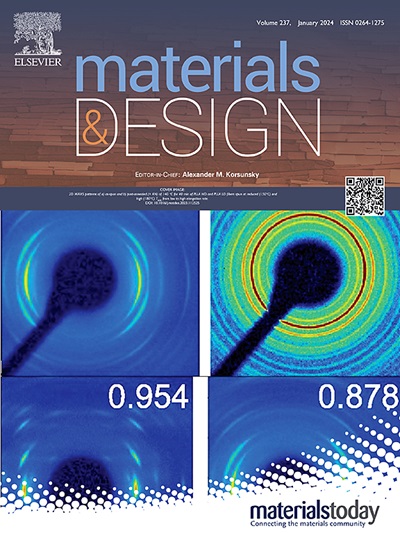Microenvironment-responsive multi-enzyme cascade nanosystem for the treatment of early caries
IF 7.6
2区 材料科学
Q1 MATERIALS SCIENCE, MULTIDISCIPLINARY
引用次数: 0
Abstract
Oral diseases associated with dental biofilms have become one of the frontiers in clinical research due to their complexity. Dental caries is a typical biofilm driven disease resulting from the diet and microbiota-matrix interactions, and it remains a substantial clinical challenge to halt the progression of caries and simultaneously repair the damaged enamel. In this regard, an oral microenvironment-responsive strategy was put forward to develop a multi-enzyme cascade nanosystem possessing antibacterial and in situ mineralization properties. During application in the oral cavity, starch was hydrolyzed by α-amylase, thereby releasing calcium phosphate prenucleation clusters (CaP-PNCs) for in situ remineralization of demineralized enamel, and providing the hydrolysis product glucose. Subsequently, glucose oxidase (GOD) conjugated to dextran-coated iron oxide nanozyme (Dex-IONP-GOD, DIG) catalyzed the production of H2O2 from glucose. Under the acidic caries microenvironment, IONP with POD-like activity can trigger H2O2 to generate reactive oxygen species. This process exhibited bactericidal activities and effectively inhibited the adhesion and biofilm formation of Streptococcus mutans. This bifunctional multi-enzyme cascade nanosystem accomplishes the adaptive initiation of pathogen elimination and in situ mineralization by its environmental responsiveness, rather than relying on the exogenous substrates, which thus provides a potential strategy for preventing and treating dental caries.

求助全文
约1分钟内获得全文
求助全文
来源期刊

Materials & Design
Engineering-Mechanical Engineering
CiteScore
14.30
自引率
7.10%
发文量
1028
审稿时长
85 days
期刊介绍:
Materials and Design is a multi-disciplinary journal that publishes original research reports, review articles, and express communications. The journal focuses on studying the structure and properties of inorganic and organic materials, advancements in synthesis, processing, characterization, and testing, the design of materials and engineering systems, and their applications in technology. It aims to bring together various aspects of materials science, engineering, physics, and chemistry.
The journal explores themes ranging from materials to design and aims to reveal the connections between natural and artificial materials, as well as experiment and modeling. Manuscripts submitted to Materials and Design should contain elements of discovery and surprise, as they often contribute new insights into the architecture and function of matter.
 求助内容:
求助内容: 应助结果提醒方式:
应助结果提醒方式:


